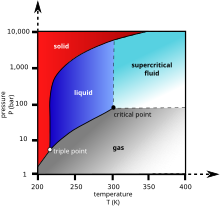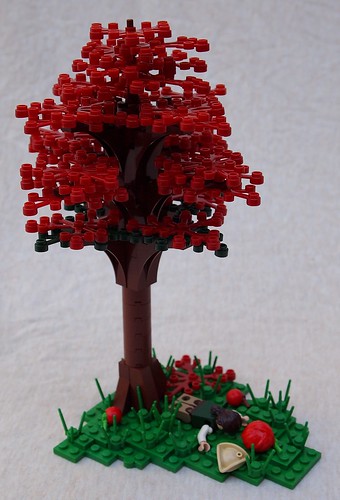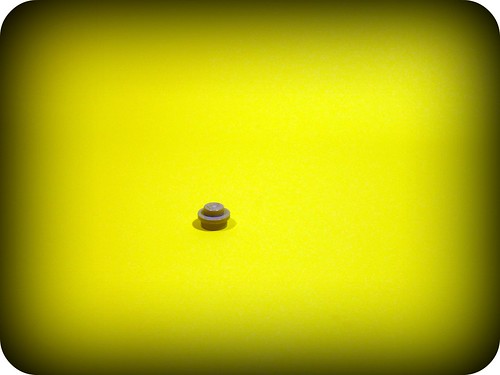
He achieves the effect by putting dry ice in a container of water in a chamber below the scene. You've probably all seen this trick used to make a mist that bubbles out and runs along the ground. Dry ice is actually solid carbon dioxide. Matter generally exists in three phases - solid, liquid and gas. You are certainly used to seeing a simple ice cube melt to form liquid water as it is warmed, and then boil to make steam if it is heated still more. Carbon dioxide actually goes directly from solid to gas phase at one atmosphere of pressure (the air pressure at sea level). Here's the phase diagram:

As you can see on that diagram, to make liquid carbon dioxde you have to be at a fairly high pressure. (As an aside, we used to make dry ice bombs in lab - pack some dry ice into a plastic vial, when it warms up and changes to gas the pressure makes it blow up. If you ever see the liquid inside, you'd better throw that thing darn quick. BTW, always wear safety goggles in lab! ;) ) (And yes, now that I'm old and stodgy, if any of my student were building dry ice bombs in lab they'd get in a lot of trouble.) Okay, back to the smoke technique. Carbon dioxide is a gas at room temperature, but a solid below -78 degrees Celsius. When you throw a chunk in water, it starts bubbling. That's not the water boiling, that's the dry ice rapidly subliming (going directly from solid to gas phase). Since the gaseous carbon dioxide is so cold (starting out at -78 C until it slowly warms to room temp), it is also very dense, so it bubbles out and runs along the ground. But the spooky smoke you see isn't the gaseous carbon dioxide - that would be completely invisible (breathe out and you'll see, or not see to be more precise). Instead as it comes into contact with water vapor in the air, it cools it down enough to condense it to small droplets, an extremely fine mist. And so that's the effect you see in this LEGO creation, or any time dry ice in water is used to create a smoke effect. I've got some dry ice here in a cooler (I actually bought a huge chunk in preparation for potentially losing power in Hurricane Sandy), so I think I'm going to put it in water in a plastic pumpkin on my porch for trick or treaters. Happy Halloween!






